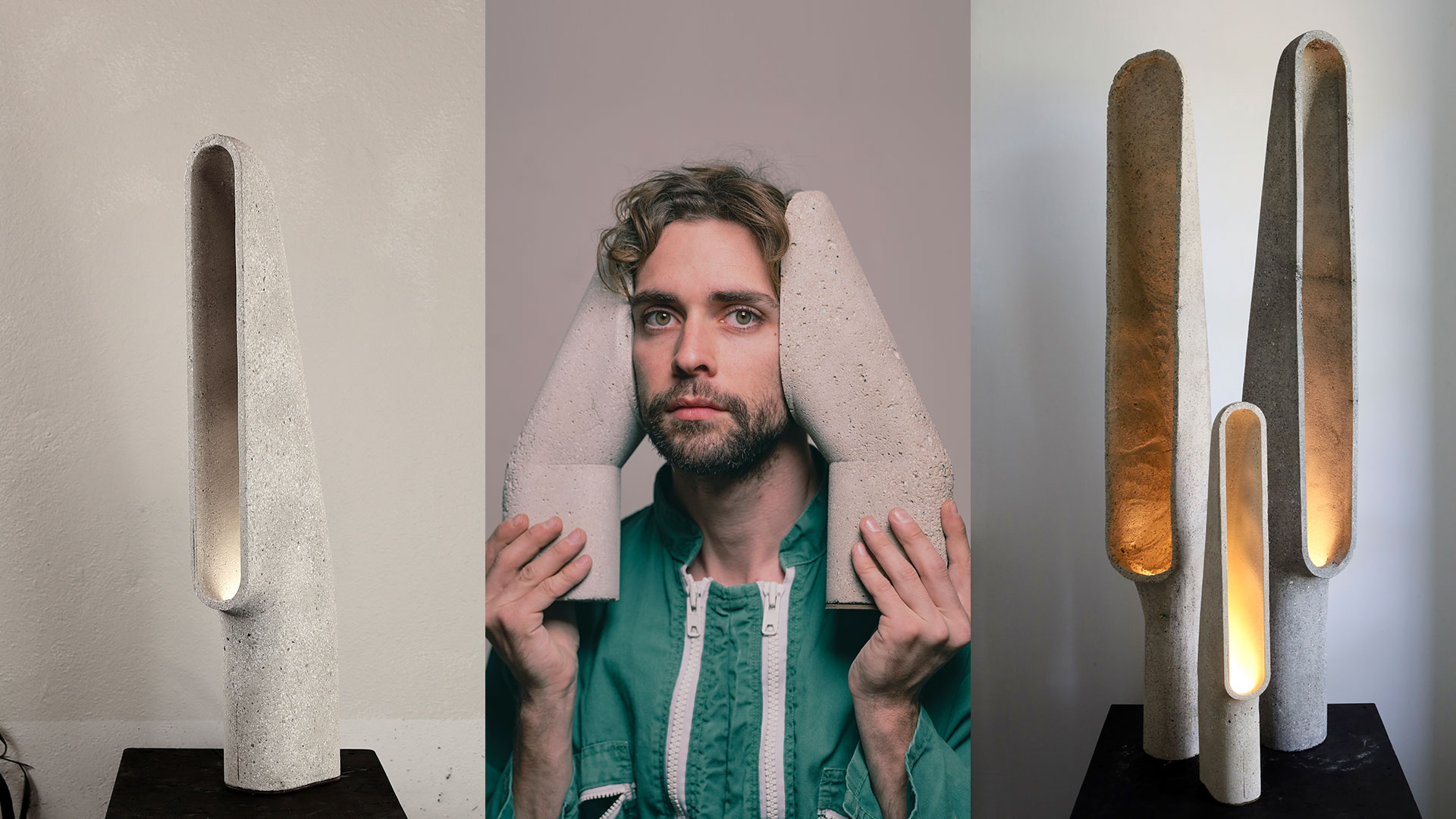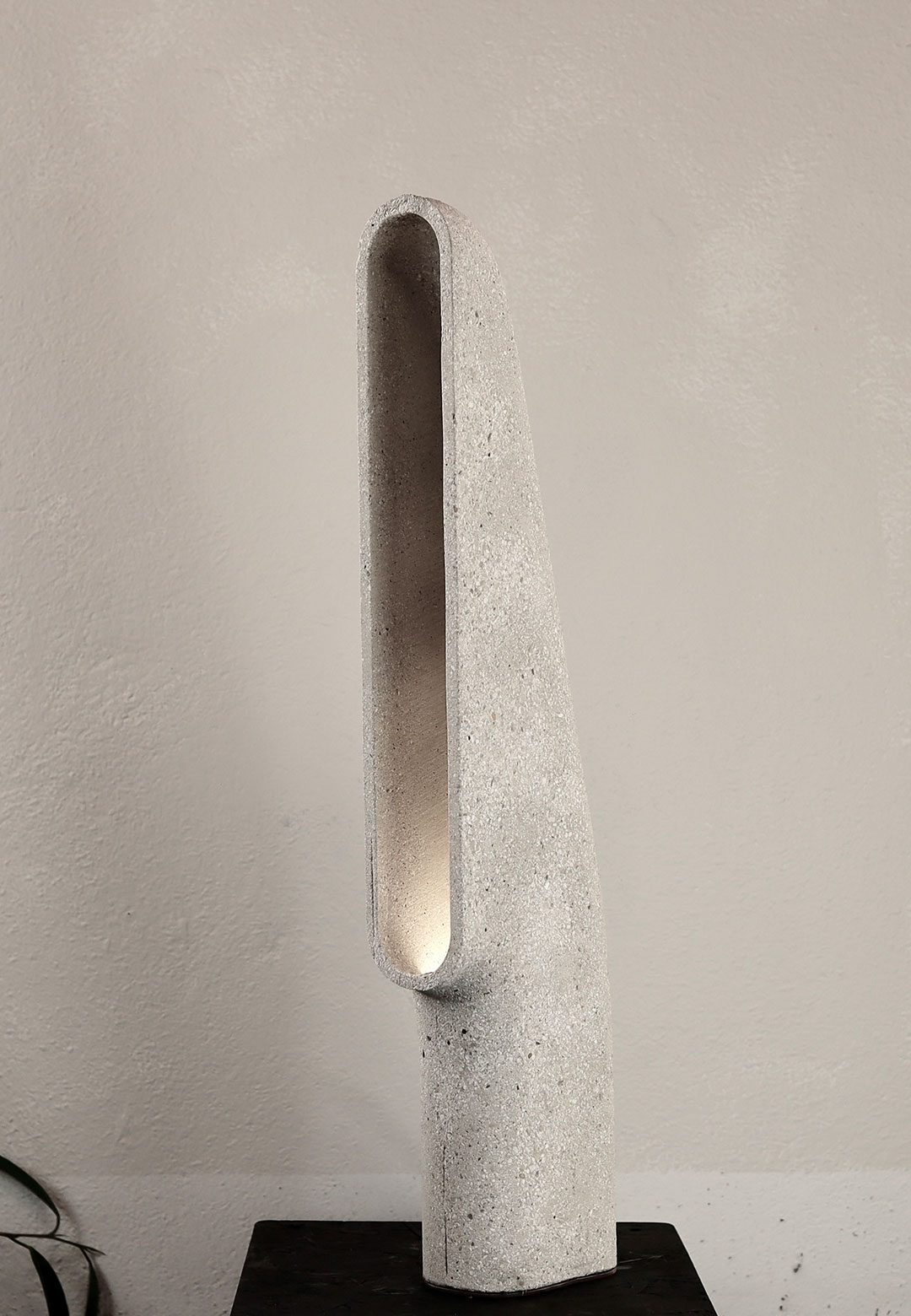Owing to its substantial carbon footprint, the concrete industry has contributed sizeably to climate change. Limestone and clay, two basic materials employed in the making of concrete, must be extracted and processed, releasing strenuous, massive amounts of carbon dioxide (CO2) in the exercise. Additionally, the manufacture of cement uses an extensive amount of energy, which increases greenhouse gas emissions significantly. In a bid to bring more awareness to this, and perhaps, combat it, 32-year-old craftsman and contemporary designer James Haywood embarked on a journey by challenging this widespread usage of concrete through his dutifully crafted and consciously produced product designs. Haywood utilises byproducts from large-scale industries to create concrete substitutes, extending the material's life cycle, and therefore, reducing the consumption of concrete itself. His latest collection of lighting designs titled Erreur 404 is a physical manifestation of his endeavour.
The subtly persuasive lighting collection is constructed using slag, a byproduct of the steel industry’s blast furnaces. It is endowed with the same qualities as conventional concrete but comes with a lower environmental impact since it is a byproduct. The aggregates utilised in the series come from a variety of waste sources, including local waste made up of ceramics, concrete, glass, and plastic. “At the heart of my work is a deep-rooted commitment to championing the utilisation of discarded materials whenever possible. I perceive these often-overlooked materials through the lens of artistic expression. I am fascinated by the intricate relationship between humanity and the natural world. By capturing both the inherent tensions and harmonious coexistence that exist between the two, I bring forth a fusion of organic and geometric forms,” shares the France-based product designer.
Haywood's initiative rejects conventional design tenets in favour of interactive and sustainable solutions. With Erreur 404, he emphasises the meticulous development of materials, forms, and procedures with a hyper-local focus. “My project is driven by a desire to shed light on the often overlooked impact of Portland cement. Concrete should not be dismissed, it will remain crucial in building our infrastructure. Its impact on the planet, however, must be diminished, and the bottlenecks are not scientific,” explains Haywood. His objective is to produce appealing, long-lasting products that combat the fleeting nature of modern design. Through his artistic lighting designs, Haywood puts the spotlight on the intricate interplay between nature and mankind. He delves into this overlooked symbiosis that we once enjoyed and safeguarded, apart from highlighting the cognitive dissonances that arise in our dual roles as creators and inhabitants of our environment. “My project endeavours to initiate conversations, raise awareness, and cultivate a deeper appreciation for the profound connections we share with our surroundings,” he adds.
Haywood’s design philosophy rests on the three pillars of functionality, aesthetics, and sustainability. For the Erreur 404 collection, he embraces 3D printing and experimented with different kinds of concrete. Apart from being durable, each piece from the collection boasts unique characteristics, owing to the usage of reinforced concrete which helped Haywood explore a range of forms. “I believe in crafting designs that exude uniqueness from every perspective, offering a minimalist allure when viewed from a distance, while revealing captivating intricacies upon closer inspection. For me, durability encompasses not only structural strength but also, the ability to remain engaging and dynamic, evading monotony over time,” elaborates Haywood, who was originally trained as an aerospace engineer.
The creative process of bringing these lamp designs to fruition is extremely detail-oriented and employs the usage of 3D printing at every step. Once Haywood conceives an idea, he transfers it to his computer and proceeds to create a 3D model. He then designs a 3D print mould, which may take a few days or weeks. The challenge that follows is to reinforce the mould, which calls for a variety of evolving processes, especially for larger parts. Another key stage is mixing the ingredients, and each batch is different based on the waste products employed. To add the finishing touches, details such as the remote and the foot of the sculptural lamps are also 3D printed. The upcycled designs are then completed upon assembling everything. Furthering his commitment to sustainable designs, all the plastic waste and other by-products from the mould are recycled and saved, to be utilised in designing objects in the future.
These eco-friendly lamps stand for the designer's dedication, to move towards a greener future, a more conscious and circular economy, in tandem with illuminating spaces with their elegance. Erreur 404 stands as an elementary example by pushing the boundaries of traditional sculptural art, amalgamating with the advantages that 3D printing technology possesses, with materials such as concrete and its by-products. To further his methods of creating recycled products, Haywood is set to explore materials like bio-resins, Roman concrete, and glass fibres from broken hulls with his upcoming projects. He plans to markedly focus on creating outdoor objects such as fountains, that can serve as habitats for local flora and fauna, underlined by his ongoing design philosophy to challenge traditional design approaches.
Text by Ria Jha






 Sign in with email
Sign in with email










What do you think?